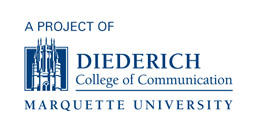
Selahattin Kurter, executive director of West Grove Clinic, a local mental health and addiction treatment provider, says fentanyl and other synthetic opioids hitting the streets are getting stronger and stronger. He believes the increased potency of opioids is a major contributor to the record high number of overdose deaths the county has seen in recent years.
“What fentanyl and other opioids do is tell the brain to stop breathing,” said Kurter, explaining how the drugs cause overdoses. “So we need stronger counter meds during overdose that work the first time and not after repeated administration.”
His concern, he said, is that he’s hearing about more cases when multiple doses of Narcan – the brand name of the naloxone medication commonly used to reverse the effects of an opioid overdose – were needed to help someone breathe again.
“That’s precious time wasted,” said Kurter, whose clinic is located at 10012 W. Capitol Drive.
Knowing that each second the brain goes without oxygen could mean the difference between life and death, Kurter sees promise in a new medication called Zimhi.
Zimhi, approved by the U.S. Food and Drug Administration in October and launched in April, is a new naloxone medication from US WorldMeds. Prefilled into a 5 mg syringe, the medication reverses overdoses faster than other drugs on the market, said Martin Brukwicki, a company rep.
A national conversation
Use of more potent substances – called opioid antagonists – to save overdose victims has become part of a national debate. The City-County Heroin, Opioid and Cocaine Task Force heard a presentation about ZIMHI in June.
Brukwicki explained that to bring somebody back from an opioid overdose, you have to remove enough of the drug from the system, whether you’re using Zimhi or any other naloxone. Zimhi, which is administered through an intramuscular or subcutaneous injection, helps victims reach that threshold faster, he said.
Kristen Grimes, director of prevention services for Vivient Health, said her organization isn’t familiar with Zimhi and doesn’t keep data on whether people use multiple doses of Narcan to treat an overdose.
But, generally, she said, “if there are more potent forms of opioids in the drugs, there is a chance that you will have to use more doses of Narcan.”
According to the U.S. Centers for Disease Control and Prevention, more than one dose of naloxone may be needed when stronger opioids such as fentanyl are involved.
Grimes said that using Narcan as a harm-reduction tool has been effective. Her organization gave out more than 16,000 free doses of it in 2021 from its Milwaukee office. From those, 367 people reported that they saved a life using it, although she’s confident that number is severely underreported.
Captain Gregory Miller, community paramedic program manager for the Milwaukee Fire Department, said he’s also heard of instances where people had to administer more than one dose of the Narcan nasal spray to revive a victim.
The Narcan spray is used by emergency medical technicians and is also common in home kits distributed in the community. But paramedics from his department administer Narcan intravenously, similar to the way Zimhi is injected.
He cautions against speculation that more potent forms of fentanyl are the reason for increased deaths.
“It could be that (the Narcan) was delivered inadequately; there could be many reasons,” he said. “No one can attribute it officially to fentanyl.”
Still, he said, it is logical that increased potency of fentanyl in particular has driven the increased death toll locally and elsewhere.
He also expressed concern about the potential for medications such as Zimhi to remove opioids from the victim’s system. It’s especially problematic for someone who takes the drug to manage pain, he said.
“If we reverse all their opioid medications, all their pain receptors come back because all their medication goes away,” he said.
Some have expressed concern about Zimhi and Kloxxado, another high-dose naloxone approved recently by the FDA, creating unintended harm by triggering severe opioid withdrawal symptoms.
Brukwicki said the health care providers he’s spoken with are happy that the higher dose naloxone is now available.
“I have heard numerous stories where providers have told me that their patients have needed multiple doses of nasal administered naloxone in order to successfully reverse opioid overdose,” he said.
According to data provided by Karen Domagalski, operations manager for the Medical Examiner’s Office, there have been 237 drug overdose deaths with 106 probable cases (pending toxicology testing) through June 29. During the same time period last year, there were 293 drug overdose deaths. The pace doesn’t appear to be slowing.
There have also been 2,270 nonfatal overdoses through May, according to the Milwaukee County Overdose Dashboard. Naloxone has been administered 874 times through May, according to the dashboard. In 2021, there were 6,767 nonfatal overdoses.
Will Zimhi be utilized in Milwaukee?
When Brukwicki discussed the new drug during the City-County Heroin, Opioid and Cocaine Task Force last month, interest seemed tepid at that time due to unfamiliarity with the medication.
But Rafael Mercado of Team HAVOC said he was interested in using it on a trial basis. Team HAVOC is a grassroots organization that works to prevent drug addiction and violence and provides free Narcan training.
“We’re willing to try it out and test it, but right now we have to utilize what we have,” he said.
Ald. Michael Murphy, chair of the task force, said he has asked Courtney Geiger of the Milwaukee Health Department to follow up with Bruckwicki to see if there’s potential for collaboration.
Brukwicki said the medication is being used in 17 states, including Wisconsin. He said the medication’s popularity and market access through private and state-funded insurance plans continues to grow as the demand increases.
“Every moment matters when it comes to an overdose,” he said.
Need help for yourself or a loved one?
You can find a comprehensive list of substance abuse treatment services by clicking here.






Great article ZIMHI IS GREAT